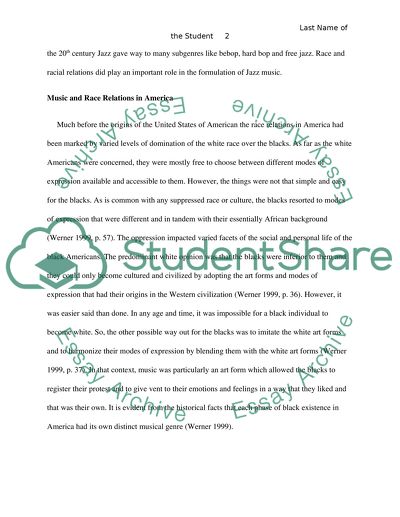Cite this document
(“Impact of Racial Relations in America on the Development of Jazz Essay”, n.d.)
Retrieved from https://studentshare.org/music/1422814-what-was-the-impact-of-racial-relations-in-america
Retrieved from https://studentshare.org/music/1422814-what-was-the-impact-of-racial-relations-in-america
(Impact of Racial Relations in America on the Development of Jazz Essay)
https://studentshare.org/music/1422814-what-was-the-impact-of-racial-relations-in-america.
https://studentshare.org/music/1422814-what-was-the-impact-of-racial-relations-in-america.
“Impact of Racial Relations in America on the Development of Jazz Essay”, n.d. https://studentshare.org/music/1422814-what-was-the-impact-of-racial-relations-in-america.


